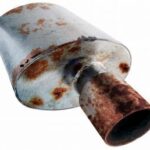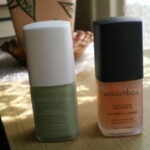Whenever I want to redecorate a room, I start with a fresh coat of paint. Sounds simple, but it may not be. It once took me five coats of primer to cover a picture my son had put on his wall with magic marker. While helping my husband renovate old houses, I learned a lot about wall surfaces, paints and primers. Depending on what type of walls you have, the previous paint job, what kind of paint you’re using and if it was patched at any time, you may have to add an undercoat to get the desired results. A little knowledge and maybe some extra work goes a long way to a perfect wall.
Different Paints, Different Primers
Enamel isn’t a true paint. Because it’s resin or varnish based, it always requires an undercoat. As I learned from experience, you have to lightly sand enamel before repainting, or the new paint will peel.
According to the experts at This Old House, water-based latex primers can only be used underneath water-based paint. Oil primers, on the other hand, can be used under either oil-based or latex paints.
If you need to seal the wall surface, as with new sheetrock or plaster, oil based primer is needed. I once tried using water-based primer on fresh sheetrock, and it soaked in and disappeared in the blink of an eye. Oil-based primers are also used to cover stains or before repainting a dark wall with a light color.
Unpainted Sheetrock and Plaster Take Special Care
As mentioned above, only oil based primer is used for unpainted plaster and two coats are required to seal it properly. After priming, you can paint the wall with either oil or latex paint.
Unpainted drywall needs one coat of latex primer to lay the nap down. Any patching with drywall mud or plaster needs two coats of oil-based primer, to prevent uneven color in the finish coat.
The Challenge of Painting Wood Paneling
Take it from me, painting paneling is a lot of work, but well worth it in the end. Wood paneling requires oil-based primer, because the water in latex primers raise the grain of the wood. Before priming, it’s best to clean the paneling thoroughly.
Once the wood is clean and thoroughly dried, it may take more than one coat of primer to seal it. Sand the primed surface lightly before applying the finish coat to avoid peeling.
Painting Vinyl is a Little More Difficult
Vinyl requires an acid-based primer, which etches itself into the surface. The pros at my local paint store recommend two coats, with a light sanding with extra-fine sandpaper after each coat. After priming, you can use either a latex or oil based paint for the finish coat.
Remember that taking the time to do something right the first time saves a lot of aggravation later on. Primers help paint stick to the walls better and give a more even color finish, making the extra work worthwhile.





